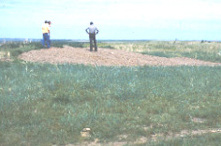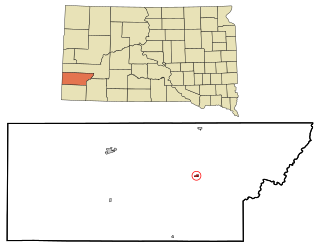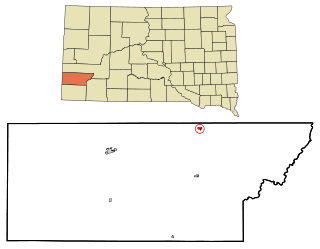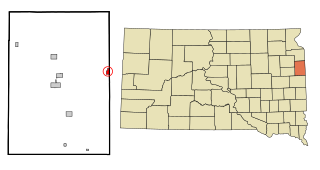
Wheatland is a census-designated place (CDP) in Cass County, North Dakota, United States. The population was 68 at the 2010 census.

Hecla is a city in Brown County, South Dakota, United States, located only a few miles south of the North Dakota border. The population was 193 at the 2020 census. State Highway 37 runs along the east side of town.

Verdon is a town in southeastern Brown County, South Dakota, United States. The population was 3 at the 2020 census.

Fort Thompson is a census-designated place (CDP) in Buffalo County, South Dakota, United States. The population was 1,282 at the 2010 census, making it the largest settlement on the Crow Creek Reservation.

Henry is a town in southwestern Codington County, South Dakota, United States. The population was 256 at the 2020 census. It is part of the Watertown, South Dakota Micropolitan Statistical Area.

Fairburn is a town in Custer County, South Dakota, United States. The population was 60 at the 2020 census.

Hermosa is a town near the northern edge of Custer County, South Dakota, United States. The population was 382 at the 2020 census.

Andover is a town in northwestern Day County, South Dakota, United States. The population was 66 at the 2020 census.

Clear Lake is a city in and the county seat of Deuel County, South Dakota, United States. The population was 1,218 at the 2020 census.

Gary is a city in Deuel County, South Dakota, United States. The population was 240 at the 2020 census. South Dakota Highway 101 serves as the main route of the community. In 2022, the town celebrated its 150th anniversary.

Timber Lake is a city in and the county seat of Dewey County, South Dakota, United States. The population was 509 at the 2020 census.

Miller is a city in and county seat of Hand County, South Dakota, United States. The population was 1,349 at the 2020 census.

Roswell is a CDP in Miner County, South Dakota, United States. The population was 8 at the 2020 census. It disincorporated as a town in 2012.

Rapid Valley is a census-designated place (CDP) and unincorporated community in Pennington County, South Dakota, United States, and a suburb of Rapid City. The population was 8,098 at the 2020 census. Rapid Valley has been a retreat for people living in Rapid City due to its low crime, cheap land, and views of the Black Hills. Rapid Valley is home to many industrial and financial businesses, and is the headquarters for many corporations specializing in transport and engineering.

Ashton is a city in eastern Spink County, South Dakota, United States. The population was 108 at the 2020 census.

Doland is a city in eastern Spink County, South Dakota, United States. The population was 199 at the 2020 census.

Iroquois is a city on the border of Beadle and Kingsbury counties in South Dakota, United States. The population was 292 at the 2020 census. The school building is located in Kingsbury County, while the school parking lot is located in Beadle County. Highway 14 runs directly through Iroquois.

Overly is a city in Bottineau County in the U.S. state of North Dakota. The population was 10 at the 2020 census.

Auburn is a census-designated place and unincorporated community in Walsh County, North Dakota, United States. Its population was 48 as of the 2010 census.
Strool is a ghost town in Perkins County, in the U.S. state of South Dakota. Founded by homesteader Benjamin Strool in 1908, Strool was noted for its thriving culture and baseball team, Jewish community, and practice of renting land rather than selling it.





















